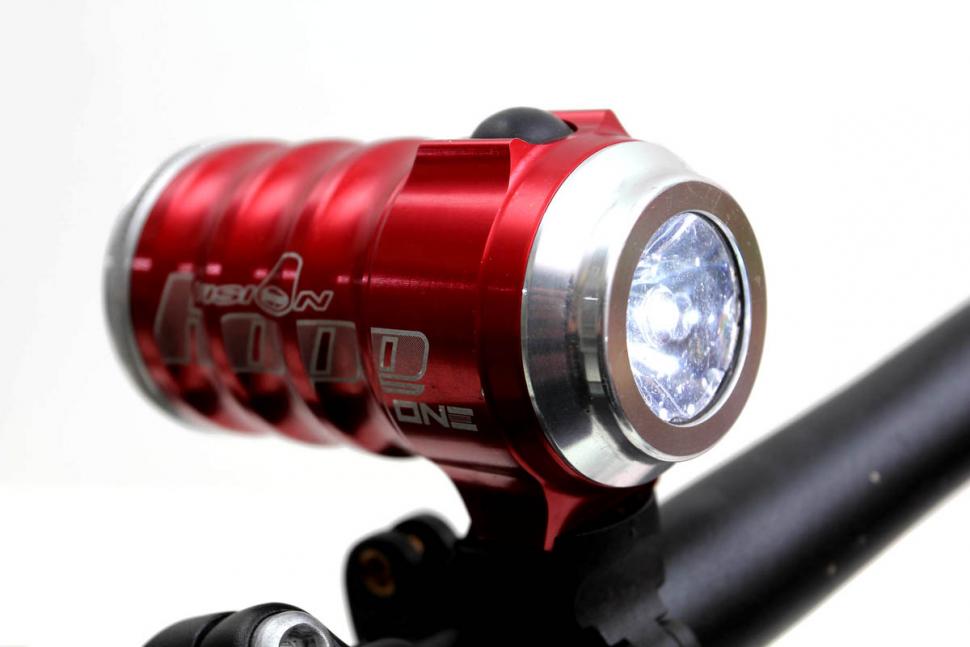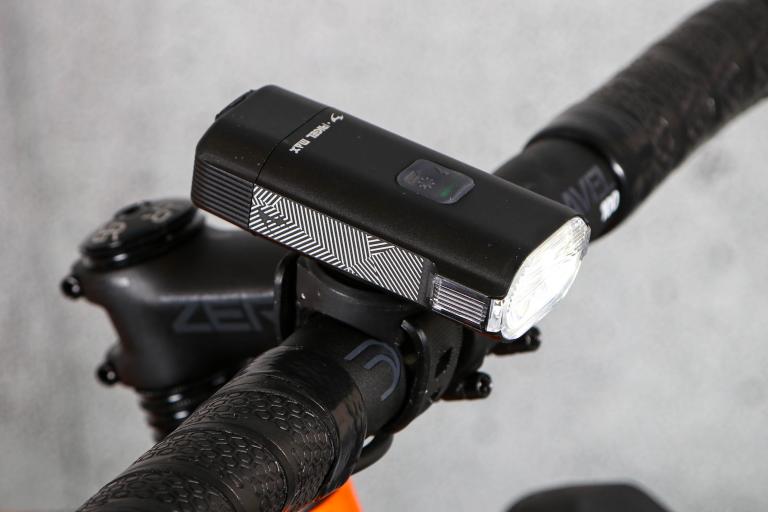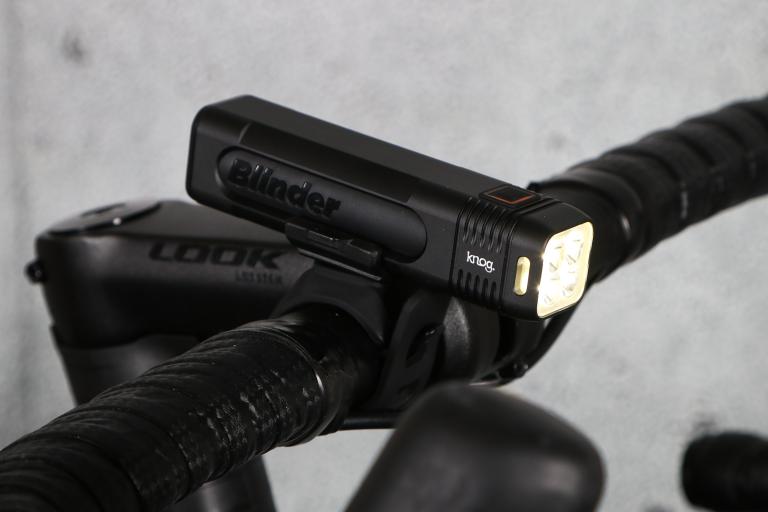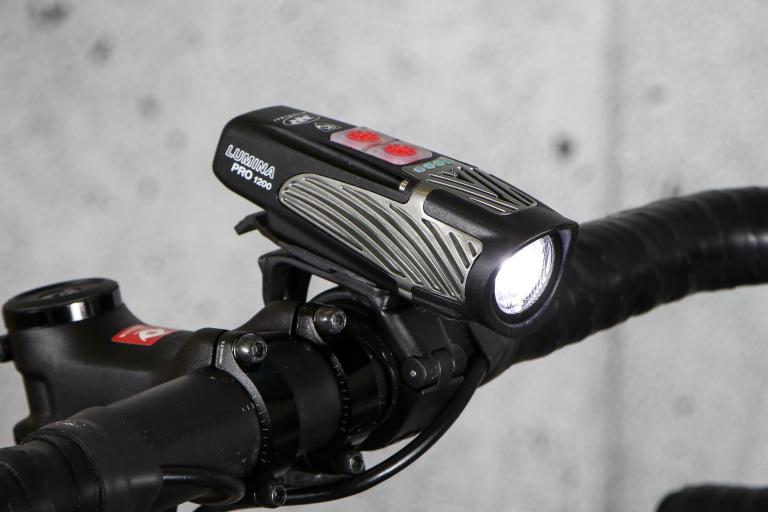- News
- Reviews
- Bikes
- Components
- Bar tape & grips
- Bottom brackets
- Brake & gear cables
- Brake & STI levers
- Brake pads & spares
- Brakes
- Cassettes & freewheels
- Chains
- Chainsets & chainrings
- Derailleurs - front
- Derailleurs - rear
- Forks
- Gear levers & shifters
- Groupsets
- Handlebars & extensions
- Headsets
- Hubs
- Inner tubes
- Pedals
- Quick releases & skewers
- Saddles
- Seatposts
- Stems
- Wheels
- Tyres
- Tubeless valves
- Accessories
- Accessories - misc
- Computer mounts
- Bags
- Bar ends
- Bike bags & cases
- Bottle cages
- Bottles
- Cameras
- Car racks
- Child seats
- Computers
- Glasses
- GPS units
- Helmets
- Lights - front
- Lights - rear
- Lights - sets
- Locks
- Mirrors
- Mudguards
- Racks
- Pumps & CO2 inflators
- Puncture kits
- Reflectives
- Smart watches
- Stands and racks
- Trailers
- Clothing
- Health, fitness and nutrition
- Tools and workshop
- Miscellaneous
- Buyers Guides
- Features
- Forum
- Recommends
- Podcast
review
 Hope Vision 1.
Hope Vision 1.£90.00
VERDICT:
Well made, useful light offering good runtimes and flexibility on battery choice sharp cut-off & lack of side visibilty might prove a drawback for some though
Weight:
259g
Contact:
www.hopetech.com
At road.cc every product is thoroughly tested for as long as it takes to get a proper insight into how well it works. Our reviewers are experienced cyclists that we trust to be objective. While we strive to ensure that opinions expressed are backed up by facts, reviews are by their nature an informed opinion, not a definitive verdict. We don't intentionally try to break anything (except locks) but we do try to look for weak points in any design. The overall score is not just an average of the other scores: it reflects both a product's function and value – with value determined by how a product compares with items of similar spec, quality, and price.
What the road.cc scores meanGood scores are more common than bad, because fortunately good products are more common than bad.
- Exceptional
- Excellent
- Very Good
- Good
- Quite good
- Average
- Not so good
- Poor
- Bad
- Appalling
Hope's Vision One is a self-contained wire-free light with a claimed output of 240 lumens from a single, large LED emitter. Hope's reputation is built on CNC machining things out of lumps of aluminium, so it's no surprise that that's exactly how the Vision One is made. It's rather nicely done, too, with a ridged outer surface, laser-etched logos and a choice of colours. It's quite large but not all that heavy, with a claimed weight of 110g (not including batteries).
The light is bolted to the bar clamp, so removing it means taking the whole lot off the bars. That's no great hardship as the clamp is a tool-free hinged design, but does mean you have to get the angle just right each time you refit it. If you're taking the Vision One on and off your bike a lot, a bit of tape on the bars to give a datum for the angle would save a bit of faffing. The nylon clamp isn't quite as well finished as the light unit itself but it does the job. Different sized bars are accommodated by interchangeable rubber bungs inside the clamp. Again, these do the job although one of them disappeared somewhere. Handily, the mount affords a few degrees of sideways adjustability so you can compensate for having the light mounted off-centre.
Inside the Vision One's body, accessed via a screw-off cap with a healthy O-ring seal, is the battery compartment. Rather than a rechargeable battery pack, Hope's light uses four good old AAs that sit in a removable holder, leaving the choice of actual batteries up to you. This approach has benefits and drawbacks. On the upside, high-capacity rechargeable AA batteries are easy to come by and inexpensive. Using a readily-available battery size means that carrying spares is more plausible and any garage or corner shop will get you lit up again. The battery holder itself is a generic item so you could even get a second one and preload it with spare batteries. In theory it should make the light cheaper too, but you don't have to look far to find lights at around the Hope's price and output that include battery and charger too.
The downside of using AAs is that the light has no way of knowing exactly what you're using, what capacity they are and what the discharge curve looks like. As a result, there's no way to design any sort of meaningful battery state indicator or low battery warning, let alone the kind of smart depowering tricks that some posh lights do. If this were an old-style halogen light then you'd get some idea of battery state by the bulb starting to go dim, but LEDs driven by voltage regulators are another story - they'll stay at a constant brightness until the battery can't deliver sufficient voltage and then go out. So the first clue you get that the Vision One is running low on power is when you're plunged into darkness.
This means that you need to pay attention to how much you've used the light since the batteries were fresh. Hope claims 2.75 hours of use on full power from 2700mAh NiMH rechargeables - I stuck some weedy 1300mAh ones in because they were handy and got over an hour out of them, so Hope's claimed run time sounds eminently plausible.
As for power, there's adequate amounts of that. 240 lumens isn't a massive output compared to some lights, but the Vision One puts out quite a tightly-focussed beam which carries a fair way. I was happy up to 20mph or so with it on full power on properly dark (no streetlights, no moon, no stars, tree cover) roads with the light positioned with no risk of dazzling oncoming drivers. Depending on circumstances you might be able to eke out a little more reach by angling it up a bit. Commuters should note that there's pretty much no side visibility.
Cycling between the settings is achieved with the usual single button push. The button itself isn't illuminated and can be tricky to find, although the ridges and bumps machined into the light's body help somewhat. I'd rather have the flashing mode outside the standard button-push cycle - as it is you get flashing between low and high which is rather distracting unless you know where you are and can pull off a quick double-push.
Verdict
The Hope Vision One is well made and offers decent, usable output and good runtimes (assuming sensible battery choice). The self-contained design is convenient, but the lack of a low battery warning is something of a drawback. Freedom of battery choice goes a long way to balancing that. Commuters may want something that's more visible from the side.
road.cc test report
Make and model: Hope Vison 1 LED Front Light
Size tested: Red
Tell us what the light is for, and who it's aimed at. What do the manufacturers say about it? How does that compare to your own feelings about it?
Hope says: "Perfect for bikers, outdoor enthusiasts and people looking for a high quality, high powered light for other nocturnal activities!"
Hope built its reputation with MTB kit, but the Vision One puts out a pretty tight, well-controlled beam so it's well suited to road use.
Tell us some more about the technical aspects of the light?
It's a CNC-machined housing containing a single LED emitter putting out a claimed 240 lumens on the highest of the four (plus flash) settings. Power is from four AA batteries -- none are supplied, so the choice is up to you. It'll run on rechargeables or regular alkalines. A hinged bar clamp is adjustable for different bar diameters and adjusts laterally too. Total weight (not including batteries) is 110g. And you get a choice of four colours.
Rate the light for quality of construction:
9/10
Hope knows a thing or five about machining things from lumps of aluminium and the Vision One shows it. The injection-moulded nylon bar clamp could be better finished.
Rate the light for design and ease of use. How simple was the light to use?
7/10
A single push-button operates the light, cycling through the settings in the traditional way. The button's not illuminated and you may need to fumble a bit to find it. Raised ridges either side provide some tactile feedback, and if they were a little bit higher would protect the switch too.
Rate the light for the design and usability of the clamping system/s
7/10
The clamp is a fairly standard hinged nylon item with a quick-release camming lever. Adjustment for bar sizes is with removable rubber pads. This works fine but they're a bit too removable -- one of them went AWOL. The light is screwed to the clamp, so you have to take the whole lot off the bars if you want to take the light off. Not a huge faff but it does mean you have to re-aim the light every time. A bit of tape stuck to the bar will sort that.
Rate the light for waterproofing. How did it stand up to the elements?
10/10
The button hides under a rubber dome, there's a substantial O-ring sealing the battery compartment, we used it in the rain, it kept working. Can't say fairer than that. Hope does advise that you take it off the bike before washing, though, and say that it's not fully submersible. So don't go diving with it.
Rate the light for battery life. How long did it last? How long did it take to recharge?
9/10
Given that the choice of battery is up to you, there's no one answer here. Hope claim 2.75 hours on maximum power from 2700mAh rechargeables -- we got over an hour from it on some cheap 1300s that we had lying around, so that sounds like a reasonable claim. Using standard AAs is potentially handy if they go flat on you -- any corner shop or garage will get you lit again.
Rate the light for performance:
8/10
Full power is adequate for up to 20mph or so on unlit roads but starts to get a bit marginal past there. You can get a bit more reach by angling it up a bit but you risk dazzling oncoming road users. Lower settings are very usable on not-completely-dark roads, but there's pretty much no side visibility -- commuters will want to supplement with something to cover that.
Rate the light for durability:
9/10
Wouldn't envisage any problems, it's all well-made and robust.
Rate the light for weight, if applicable:
7/10
It's not crazily heavy (and it does depend a bit on what batteries you use) in absolute terms, but there are smaller and lighter units out there with comparable light output.
Rate the light for value:
7/10
Considering the relatively small production volumes and UK provenance of the Vision One, it's pretty good value. There are a lot of lights offering similar (or more) power for around the same money while including rechargeable batteries, though.
Tell us what you particularly liked about the light
All-in-one lights are handy things, and the Hope is a well-made, robust example. Using standard AA batteries gives plenty of versatility, but has its drawbacks...
Tell us what you particularly disliked about the light
Because Hope doesn't know what batteries you're using, there's no battery level indicator or low-battery alert, and it doesn't start knocking itself back a power level as the batteries go. Once there's insufficient juice it just goes out. So you need to pay attention to run times and charging/battery replacement to avoid getting caught out.
Did you enjoy using the light? Yes.
Would you consider buying the light? It doesn't quite fit my personal needs, but if it did, yes.
Would you recommend the light to a friend? If they were sufficiently on the ball to keep track of battery usage, yes.
About the tester
Age: 38 Height: 6ft Weight: 11st
I usually ride: Whichever's nearest the door My best bike is:
I've been riding for: Over 20 years I ride: Most days I would class myself as: Expert
I regularly do the following types of riding: cyclo cross, sportives, general fitness riding, fixed/singlespeed, mtb, Track; to the shops; with the kids
Latest Comments
- brooksby 12 min 47 sec ago
WHY did this bloke throw a full water bottle at VDP? Who goes to a major sporting event and thinks to themself, "You know what - I think I'll try...
- Dnnnnnn 22 min 39 sec ago
"With the six-month review of the scheme now approaching"... LOL. The scheme they prevented implementation of for almost six months....
- mark1a 24 min 36 sec ago
Do you by any chance get these options on the discovery+ screen? I get TNT via Sky (i.e. I get billed by Sky as part of TV/broadband/phone/etc...
- Rendel Harris 35 min 17 sec ago
Especially as apparently his Di2 managed to mistake the shaking from the cobbles of the Arenberg as a crash and went into crash mode, locking him...
- wtjs 37 min 40 sec ago
APPGs (not just this one) are pretty low down the influence ladder...
- Gus T 1 hour 16 min ago
Don't forget that the Tariffs will still apply to the imported raw materials and parts so are of no benefit to the US consumer. Americas burns...
- Gus T 1 hour 24 min ago
My wife & I visited Bristol for the 1st time a couple of weeks ago, I was amazed at the congestion caused by the number of single occupancy...
- hawkinspeter 2 hours 4 min ago
https://www.bristolpost.co.uk/news/bristol-news/live-bus-crashes-bridge-bristol-10103689 That bridge really needs some hi-viz
- Rendel Harris 2 hours 29 min ago
"However, one passenger on the bus at the time of the collision, Victoria Lester, who was sitting "right behind the bus doors" reported Lucas's...




Add new comment
6 comments
Hi, Just wondering if you plan to review the 2013 version in the near future as I'd be very interested in seeing what you make of it now it has a low battery warning.
I'm also using that Hope and I agree with you guys: good performance, sturdy/quality build, not so solid mounting and thrilling guessing game, when the lights are going to go out
For the time being I'm not spending mo'money on another light, that will have to suffice.
PS: Did I mention you can let the light "hang" as well? No need to mount it top-wise onto the bar...
I too have owned this light for a couple of years and it is more than adequate for my needs. It's well made and feels as though it will last a lifetime.
As for the cut-out issue, I use 2700 rechargeables and get a good week's commuting use out of them and at this time of year that's both ways in the dark, about 5 miles each way. I use the maximum brightness setting infrequently, generally finding the 2 below that to be more than enough for lit and unlit roads.
When the light has cut out on me, which has happened a few times, I generally find that I can switch it back on again on the lowest brightness setting, and that usually gets me home. I've never found myself completely without light.
Owmed mine for 2 years. Not bad, but as the others have said, the cut-out issue is a bit of a pain. It would be better if the light switched on straight to flashing mode (instead of full power). That way, at least you might have enough juice left to get home. However, switching on straight to full power immediately causes the light to cut out before you can cycle down to flashing mode.
I've owned this light for nearly 4 years now, and although it has it merits I personally wouldn't recommend it.
The main issue is the cutting out when the batteries are low, which I have found is more of an issue than perhaps the review suggests. I've found that it tends to cut out when there is a jolt of some sort such as a pothole, which just adds the shock when it cuts out. I haven't crashed because of it but have come seriously close!
Other than that I think the review is spot on - very nicely made and practical light with plenty of power.
Because we're er… crazee this is the second test of the Hope Vision 1 we've done this year a fact we only realised when we were in the process of posting this one. This test has the benefit of our added Beam-O-Tron comparison tool but if you want more insights on the light check out Rob Simmond's earlier review here http://road.cc/content/review/31817-hope-vision-1-led-front-light It's also reassuring from out point of view to see that both Rob and David came to very similar conclusions independently of each other.